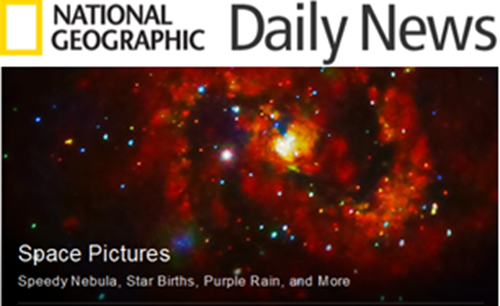
Space Pictures This Week: Speedy Nebula, Star Births, More
By Kastalia Medrano, National Geographic News, 3 August 2012.
By Kastalia Medrano, National Geographic News, 3 August 2012.
1. Stellar Nursery
This cluster of primary colours is the Trifid Nebula - nicknamed the "star factory" - which sits in the Sagittarius constellation. Submitted to National Geographic's My Shot photo community on August 1, the colourful composition is also one of National Geographic's favourite space pictures this week.
Trifid actually comprises three kinds of nebulae - great clouds of interstellar gas and dust.
The "reflection nebula" at left scatters blue light from nearby stars. To the right, infant stars jammed in the centre of Trifid heat surrounding gas, whose high hydrogen content explains the reddish glow. Finally, the star factory is cross-crossed by slender, light-obscuring "dark nebulae."
2. Light Show
Thin ribbons of plasma and magnetic lines burst from the sun in a still from a video taken by NASA's Solar Dynamics Observatory (SDO) on July 23 and 24.
About one-third of the sun showed signs of activity when the video was taken, according to the SDO team. Stretching from one active region to another, magnetic field lines cause the looping formations.
3. Purple Rain
Star trails - the results of a long exposure and Earth's rotation - illuminate the night sky over Hungary's Szazhalombatta Archaeological Park in a picture recently submitted to the astronomy-education project The World at Night (TWAN).
Spectacular views of stars and other celestial phenomena are common from the park, which recreates prehistoric village life. The grassy mound at left is an Iron Age burial ground, while the house on the right is modelled after a Bronze Age dwelling.
Photo credit link: Tamas Ladanyi, TWAN.
4. X-Ray Vision
The spiral galaxy M83 resembles a massive pinwheel in one of the deepest ever x-ray pictures of a galaxy other than our own Milky Way.
Released July 30 by NASA's Chandra X-ray Observatory, the image shows x-ray emissions with low (red), medium (green), and high (blue) energy.
5. Trail Blazer
Meet HFG1, a planetary nebula on the move - as seen in a recent picture from Kitt Peak National Observatory in Arizona [USA].
The star system that caused the nebula to form, V664 Cas, is moving so rapidly that it creates a bow shock, the blue arc of displaced matter at upper right. The red swath behind is residue from gases in the system.
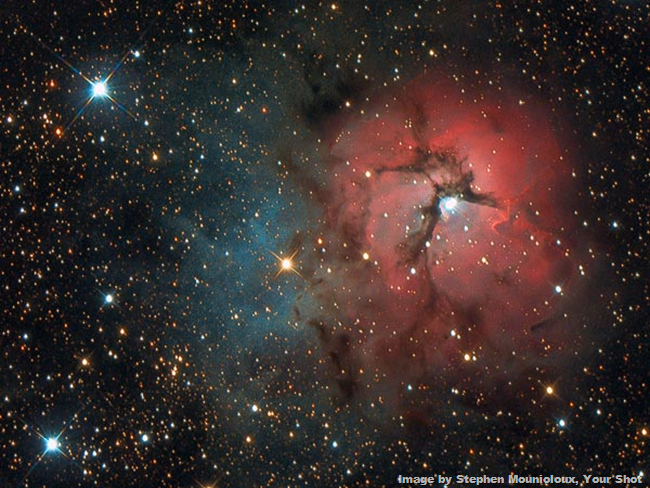
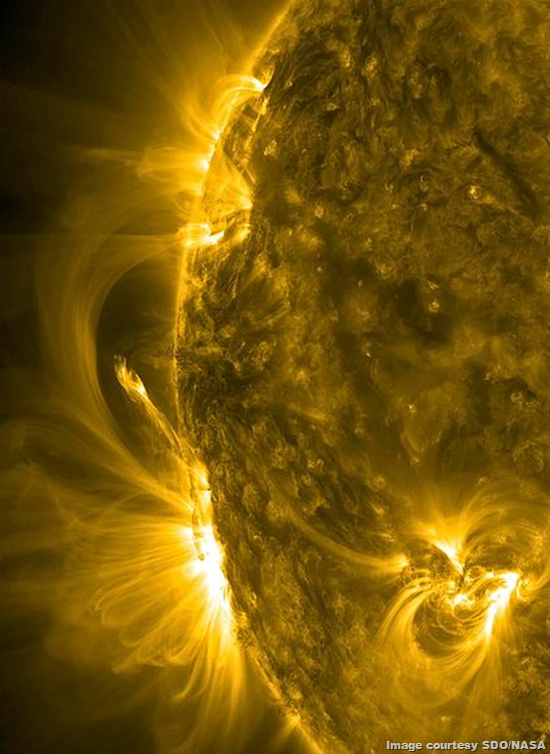
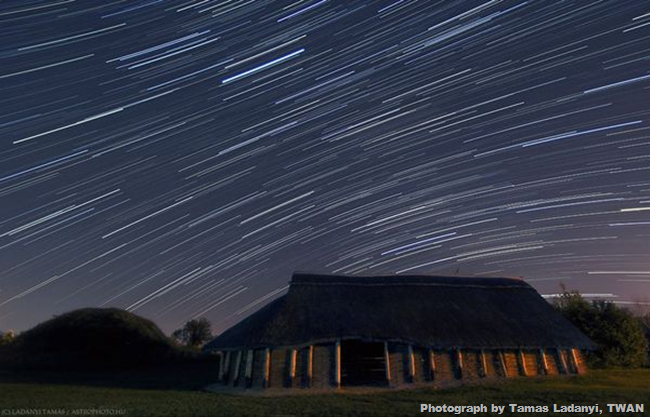
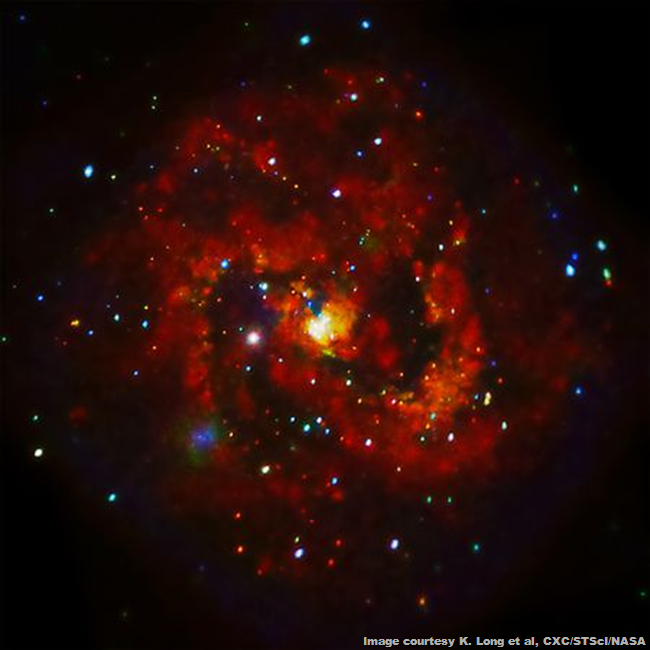
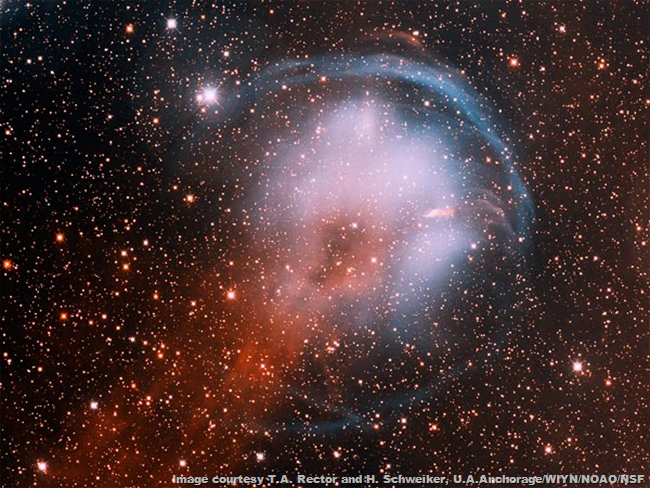
No comments:
Post a Comment
Please adhere to proper blog etiquette when posting your comments. This blog owner will exercise his absolution discretion in allowing or rejecting any comments that are deemed seditious, defamatory, libelous, racist, vulgar, insulting, and other remarks that exhibit similar characteristics. If you insist on using anonymous comments, please write your name or other IDs at the end of your message.